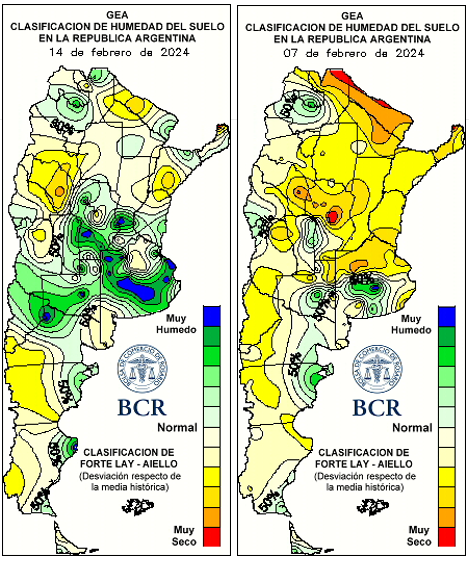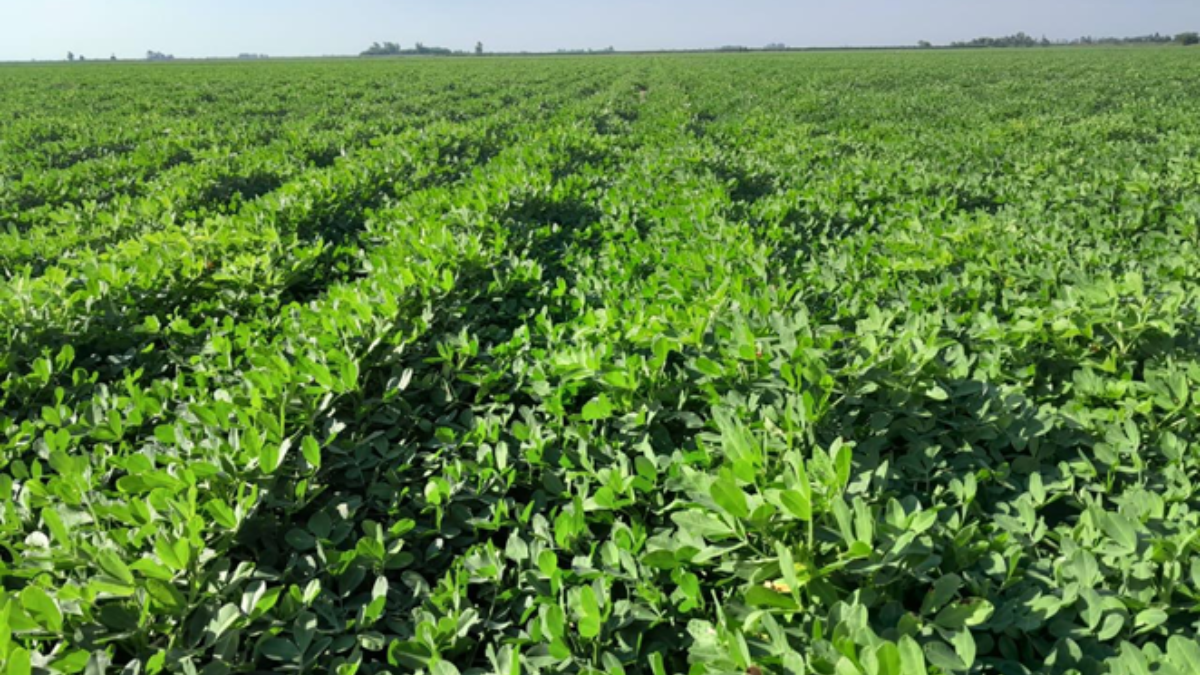4th Crop Report as of 10 February
Overview of 4th Crop Report
In this report, we may underline scarce rainfall and extended extreme temperatures for more than 23 days. This has negatively affected soils and caused a substantial decrease in soil water reserves. Early this month, the problem heightened with temperatures exceeding 35 ºC and high daily exposure to solar radiation, resulting in a heat stress scenario. Peanut crops faced adverse weather conditions, mainly in northern La Pampa, western Buenos Aires and central Córdoba. Even though some lots have experienced a decline in hydric conditions, more than 70% of these areas feature normal crop conditions, indicating a certain degree of crop resiliency. This context calls for adapting varieties and agronomic practices (both of crucial importance), as well as the careful selection of fields. These measures are considered key elements to mitigate the negative impacts described above, deemed fundamental strategies to face adverse climatic conditions.


Concerning the general crop condition, it has changed since the January report. Following is a comparative table illustrating such changes:

This variation is attributed to temperatures and water availability, which have played a decisive role in the evolution of crop health and vitality.
With crops moving into the critical period (Phenological stage R3/R4), during which future yields are defined, the urgent need for rainfall appears as an additional challenge, somewhat marked by the seasonal drought affecting the crop.
Despite the general deterioration observed since the last report, fortunately, rains arrived last weekend and have extended across the entire region, bringing considerable relief to crops suffering adverse conditions. These rains have resulted in the resumption of the productive process of peanut crops, thus generating new pods and fruits.

Concurrently, in response to improved weather conditions, the planning of second fungicide applications has begun. This defensive approach speaks to the continuous attention to crop health and the prevention of potential foliar diseases, thus consolidating the integral phytosanitary management approach.
Our reference map of peanut-growing areas
The main peanut-growing areas in Argentina include the provinces of Córdoba, La Pampa, San Luis and Buenos Aires.

January 2024 Climatic Conditions Analysis
Rainfalls:
In January 2024, the region experienced a significant climate change with the disruption of an atmospheric blocking event, causing rains that brought relief to agriculture, albeit unevenly. This relief was temporary, as in mid-January the atmospheric blocking returned, giving rise to a prolonged drought marked by extreme temperatures that caused crop stress.
The expectation is that, during February, there will be a gradual return of rainfall. In this context, heavy rains were recently observed in Córdoba, La Pampa, and Buenos Aires, which benefited peanut crops.

Temperatures:
The first week of February aggravated the already difficult situation that impacted crops during the second half of January, a crucial period in terms of water requirements. The extended absence of rains and more than 23 consecutive days with extreme temperatures strongly impacted soils, resulting in a significant decrease in water reserve levels, especially in the core zone of the Pampa region.
The beginning of the new month intensified the heat stress scenario, with highs over 35 °C and high daily exposure to solar radiation that led to lows that remained steady at 23 °C. Although a short-term relief was experienced with a weather front on February 4, it was neither widespread nor long-lasting.

Soil Water Reserves:
The last 10 days of the month have evidenced a negative variation in water reserves, as depicted in the yellow area on the map. This substantial decrease is indicative of a significant reduction of available water in the soil profile.
During January, soil moisture levels have changed throughout the peanut growing region. Some areas have experienced improvements due to recent rains, contributing to an increase in soil water content. However, in contrast, other regions have suffered a reduction in water reserves, highlighting the heterogeneity of conditions in the peanut growing area. It is crucial to continue to monitor these changes to better understand the impact on crops and make informed agricultural management decisions.

Field Tasks
The second fungicide application has been implemented extensively.
Plot monitoring continues regularly, especially focused on weed control in all the areas marked on our reference map. Active surveillance seeks to maintain crop health and ensure an environment conducive to crop development.
As a result of the prevailing hydric stress, insecticide application against spider mite has been intensified. Frequently, growers have been forced to make more than two applications, due to the high incidence of this pest.
On the other hand, due to the drought conditions, Sclerotinia spp. has paused its progress, as mentioned in previous reports. This slowdown in disease spread brings momentary relief and allows focusing efforts on other critical crop management areas, while closely monitoring any changes in this situation.



Conclusions
Peanut crops, previously affected by severe water shortages, faced an abrupt change with a heat wave that persisted for more than 23 days, characterized by extreme temperatures and high sunlight exposure. During this period, highs exceeded 35 °C, while lows rarely dropped below 23 °C, along with a marked decrease in ambient humidity.
This phenological delay, caused by the drought and subsequently, the heat wave, substantially changed on February 8 with widespread rainfall throughout the peanut growing area. The rain brought relief to crops that went into the stages of high environmental demand. As we move into February, crop yield potential is beginning to take shape, highlighting the critical importance of rainfall in the coming days to consolidate future yields this season.
Based on the current crop status as of the date of this report, 38% of the peanuts have reached the advanced reproductive stage (R4), 58% are in full pod stage (R3), and 4% in the early reproductive stage (R2).
We believe that the lack of widespread rains since mid-January and the extensive heat wave endured will not be inconsequential. Although we are yet unable to define its impact, the crop will suffer a loss of potential yield.
We may conclude that there is still hope for a decent crop, but no longer a record crop.














